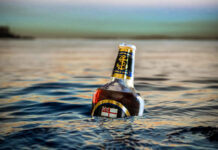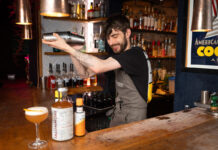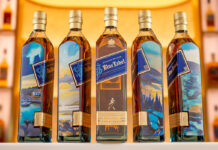Operators urged to capitalise on growing demand for flavours
Factors such as the lower drink drive limit and concerns over health are encouraging more people to turn to soft drinks, and producers say licensees must offer a broader range if they are to capitalise.
Choice, they say, is important and operators should provide more options in order to boost sales.

Amanda Grabham, marketing director for soft drinks at SHS Drinks, whose portfolio includes Shloer, said there are “plenty of opportunities” for licensees.
“One of the most fundamental changes in consumer behaviour contributing to the growth of ASD (adult soft drinks) sales is the fact that more consumers are drinking less alcohol and more than one in five adults (21%) don’t drink alcohol at all,” she said.
“In addition to this there are those who aren’t drinking alcohol for religious or health reasons or on specific occasions such as when they are driving or they are mums-to-be.”
Alan Hay, on-trade controller at AG Barr, said soft drinks sales are expected to rise in the wake of the lower drink drive limit in Scotland.
“Consumers are very aware of the new limits and the potential consequences for the next day if they are driving and this will increase sales of soft drinks,” said Hay.

“The challenge for publicans will be to enhance their current non-alcoholic range to counteract menu fatigue from consumers in pubs or restaurants.
“They need to ensure that there is a varied and interesting choice of soft drinks available to cater for this need.”
Soft drinks firms say they have expanded their ranges to meet demand for more variety, adding that they have also been influenced by customers’ increasing desire for healthy soft drinks and those with provenance.
“People are increasingly looking for healthier options when they go out for a drink, so the importance of light variants is increasing,” said a spokeswoman for Coca-Cola Enterprises (CCE).
“New product innovation is also important across the soft drinks category as a whole.
“In the licensed sector in particular, this is backed by a desire for premium drinks that carry some degree of provenance in heritage – or, in other words, a ‘special’ drink that differs from one they might have day-to-day.”
This was reinforced by Simon Speers, managing director of Bottlegreen Drinks, who claimed there is a “growth in the popularity of more exotic flavours”. “There is undoubtedly a thirst for more interesting flavour combinations, with 46% of consumers saying they would like to see more adventurous flavours and this is something that we have been very keen to develop,” he said.
Selecting the right products and flavours is important, but operators should also ensure their soft drinks ranges are visible.
“It sounds obvious, but ensuring that your customers know what is available is key and that means increasing visibility by making effective use of point-of-sale materials, such as table talkers, chalkboards and menus, and training staff to communicate the variety of choice you offer,” said Grabham, of SHS Drinks.
The importance of visibility was also stressed by CCE.
“Make soft drinks visible by using POS materials, whilst displaying soft drinks prominently in the chiller,” said the spokeswoman.
“It’s important to stock best-selling drinks, but consumers are increasingly demanding a wider choice.
“Consider promoting newly introduced variants, whilst stocking a broad selection of flavours.
“People drinking soft drinks in pubs and bars may wish to have a more ‘premium’ drink to effectively replace a glass of wine or bottle of beer.”



















